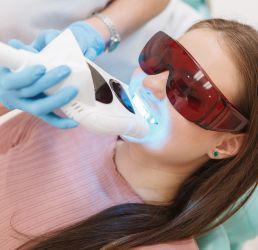
Introduction
In the realm of dentistry, preserving the natural structure of teeth is paramount. Minimally invasive dentistry, a philosophy that has gained prominence in recent years, focuses on techniques and practices that aim to conserve as much of the patient’s original tooth structure as possible during various treatments. This approach not only maintains the structural integrity of the teeth but also contributes to better long-term oral health outcomes.
Understanding Minimally Invasive Dentistry
The concept of minimally invasive dentistry revolves around the principle of “less is more.” Dentists who embrace this philosophy prioritize preventive measures and interventions that minimize the removal of healthy tooth structure. This not only results in less discomfort for the patient but also helps preserve the natural strength of the tooth.
Benefits of Minimally Invasive Dentistry
1. Preserves Natural Tooth Structure
Unlike traditional dental procedures that may involve significant enamel removal, minimally invasive techniques target only the damaged or affected areas, leaving healthy tooth structure intact.
2. Reduced Discomfort
Minimally invasive procedures often cause less discomfort both during and after treatment, leading to a more pleasant patient experience.
3. Faster Recovery
Because less tissue is disturbed, patients tend to experience faster healing times and can return to their regular routines more quickly.
4. Long-Term Oral Health
By conserving natural tooth structure, minimally invasive dentistry promotes the overall longevity of teeth and reduces the risk of future complications.
Minimally Invasive Techniques and Practices
1. Microdentistry
Using magnification and precision tools, dentists can perform delicate procedures while minimizing the impact on healthy tissue.
2. Air Abrasion
This technique involves using a stream of abrasive particles to remove decay or other dental materials, requiring less drilling and preserving tooth structure.
3. Sealants
Applying dental sealants to the grooves and pits of teeth helps prevent decay, offering a non-invasive approach to maintaining oral health.
4. Laser Dentistry
Lasers can target specific areas for treatment, reducing the need for extensive cutting and suturing. This is especially useful in gum surgeries and cavity preparations.
5. Conservative Fillings
Dentists choose tooth-colored fillings that bond directly to the tooth structure, allowing for a more conservative removal of decay.
6. Orthodontics
Minimally invasive orthodontic options, like clear aligners, can correct tooth alignment without the need for traditional braces.
Patient-Centered Dentistry
The philosophy of minimally invasive dentistry aligns with patient-centered care, as it places the patient’s well-being and comfort at the forefront. Dentists who adopt this approach not only prioritize maintaining oral health but also enhance their patients’ confidence and quality of life.
In conclusion, minimally invasive dentistry represents a shift towards preserving the beauty and strength of natural teeth. By utilizing innovative techniques and practices, dental professionals can provide effective treatments while minimizing the impact on healthy tooth structure. As the field of dentistry continues to evolve, the principles of minimally invasive dentistry promise to deliver brighter smiles and healthier lives for patients.




